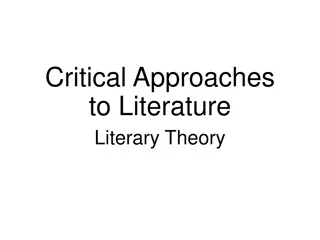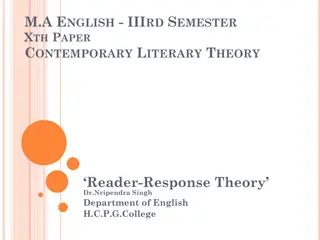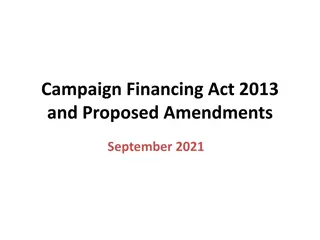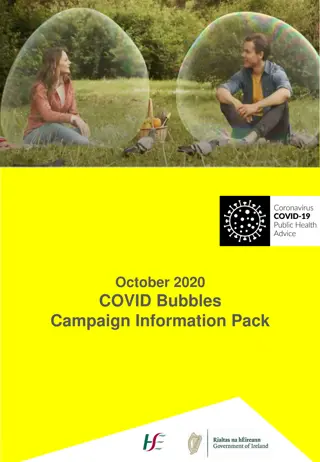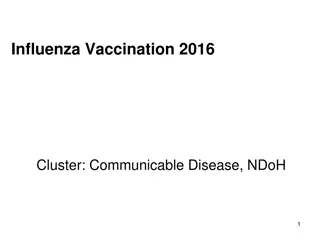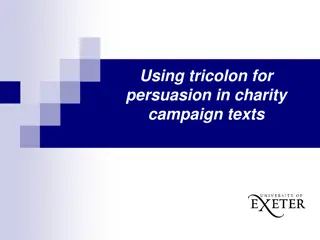Understanding Reader Response in Charity Campaign Texts
Explore the impact of adverbial choices in charity campaign texts like the RSPCA advert, analyzing how they shape reader perception and evoke emotional response. Discover the nuances of positioning readers through sentence structure and advocating for a cause effectively.
Download Presentation

Please find below an Image/Link to download the presentation.
The content on the website is provided AS IS for your information and personal use only. It may not be sold, licensed, or shared on other websites without obtaining consent from the author. Download presentation by click this link. If you encounter any issues during the download, it is possible that the publisher has removed the file from their server.
E N D
Presentation Transcript
Positioning the reader in charity campaign texts through adverbial choices
LEAD Principles PRINCIPLE LINKS EXPLANATION RATIONALE To establish a purposeful learning reason for addressing grammar, and connect grammar with meaning and rhetorical effect Make a link between the grammar being introduced and how it works in the writing being taught To avoid writing lessons becoming mini- grammar lessons, and to allow access to the structure even if the grammar concept is not fully understood To integrate reading and writing and show how real writers make language choices EXAMPLES Explain the grammar through examples, not lengthy explanations AUTHENTIC TEXTS Use authentic texts as models to link writers to the broader community of writers To promote deep metalinguistic learning about why a particular choice works, and to develop independence rather than compliance DISCUSSION Build in high-quality discussion about grammar and its effects
How should the reader respond? Authentic text Beaten. Neglected. Starved. Will you help feed a dog like Archie until we can find him a home? When we found Archie, he weighed 3.2kg just half what he should have. Thankfully, he was brought to one of our rescue centres and has made a full recovery. But Archie is only one of over 120,000 animals rescued by the RSPCA each year. Please help us to help them. (RSPCA advert) What is the purpose of this text - the author s intention? What choices about sentence structure have been made to achieve this? How well do they work? Is there anything you might change? Discussion
Noticing details in a text Authentic text How does the choice and placing of these adverbs tell the reader about the work of the RSPCA? How should the reader respond? Links Discussion Beaten. Neglected. Starved. Will you help feed a dog like Archie until we can find him a home? When we found Archie, he weighed 3.2kg just half what he should have. Thankfully, he was brought to one of our rescue centres and has made a full recovery. But Archie is only one of over 120,000 animals rescued by the RSPC each year. Please help us to help them.
Noticing details in a text Authentic text How does the choice and placing of these adverbial phrases tell the reader about the work of the RSPCA? How should the reader respond? Links Discussion Beaten. Neglected. Starved. Will you help feed a dog like Archie until we can find him a home? When we found Archie, he weighed 3.2kg just half what he should have. Thankfully, he was brought to one of our rescue centres and has made a full recovery. But Archie is only one of over 120,000 animals rescued by the RSPC each year. Please help us to help them.
Noticing details in a text Authentic text How does the choice and placing of these adverbial clauses tell the reader about the work of the RSPCA? How should the reader respond? Links Discussion Beaten. Neglected. Starved. Will you help feed a dog like Archie until we can find him a home? When we found Archie, he weighed 3.2kg just half what he should have. Thankfully, he was brought to one of our rescue centres and has made a full recovery. But Archie is only one of over 120,000 animals rescued by the RSPC each year. Please help us to help them.
Verbalising the Grammar-Writing Link A crucial element of the LEAD principles is helping writers to think explicitly (metalinguistically) about the choices they make. As a teacher, you need to support this by being crystal clear yourself about how you verbalise the link between a grammar choice and its effect in a particular text/context. Then express this in student-friendly language, as below. Verbalisation to share with students: When you are writing to persuade, for example in a campaign text, you should think about how you want your reader to respond to your message. Think about how you can use adverbials (single adverbs, phrases and clauses), to strengthen the point you are making and persuade your reader to think or act in a certain way.
Look at the highlighted adverbials in this RSPCA campaign text. How does the choice and placing of these adverbials tell the reader about the problem? How should the reader respond? Primates as Pets We strongly believe that primates, as highly intelligent and complex wild animals, are not suitable pets. Similar to humans, they form intricate relationships and experience emotions, and some can even reflect on their past experiences and feelings. Sadly, thousands of primates, such as marmosets, capuchins and squirrel monkeys, are currently being confined inside UK homes. Like humans, primates rely on their mothers, often until adulthood and beyond. Yet they can be torn from them at just a few weeks old to be hand-reared by humans, a distressful and cruel practice.





